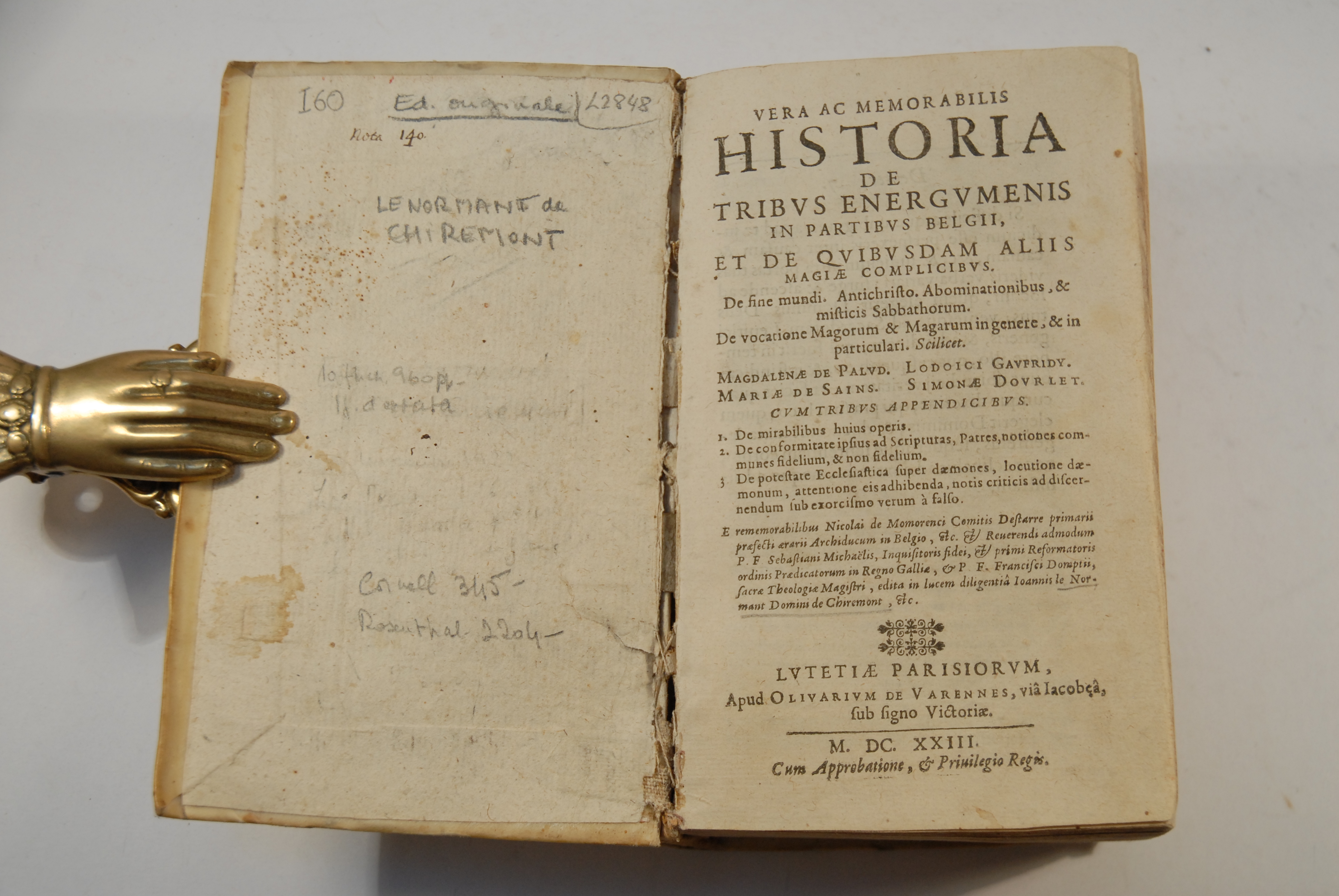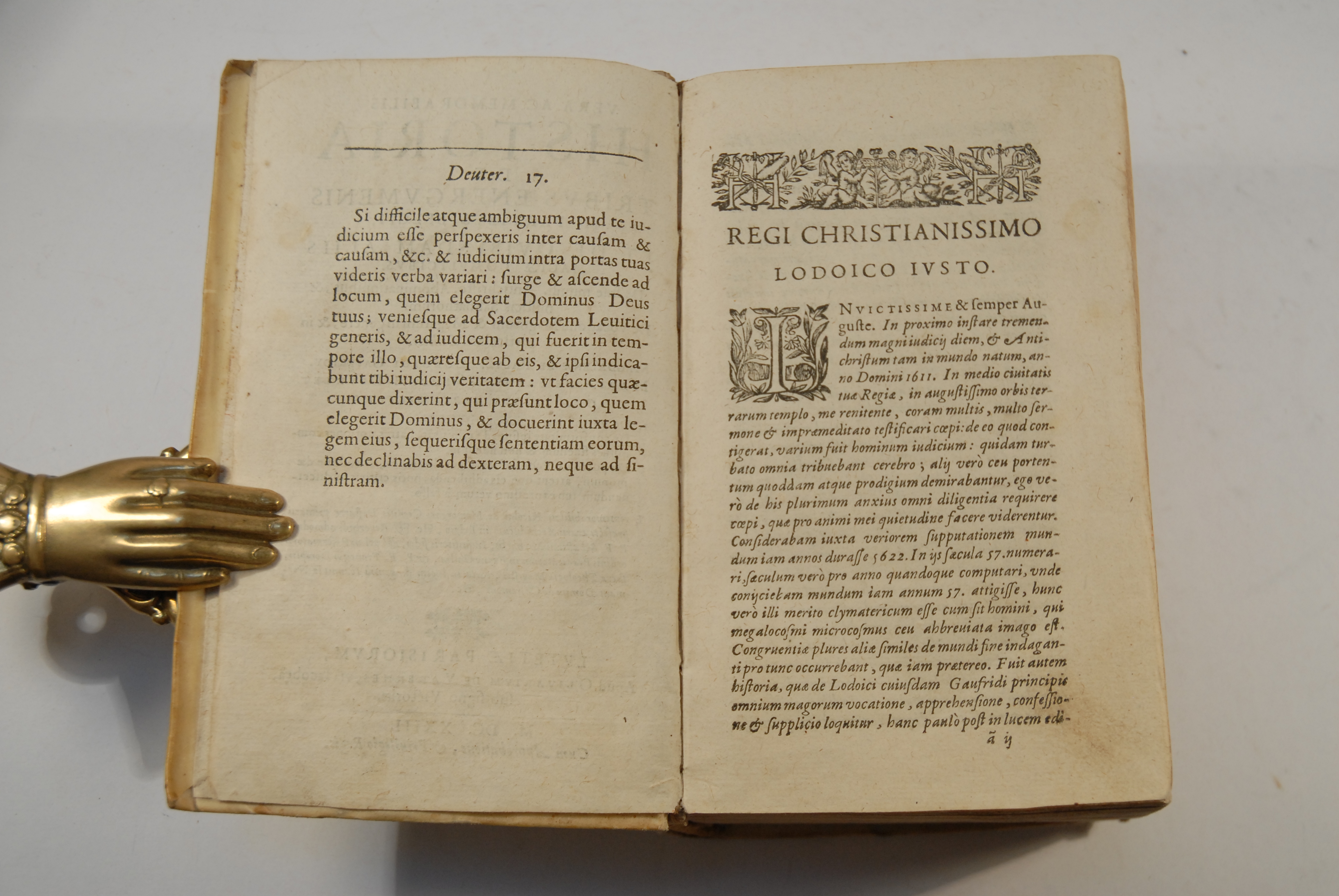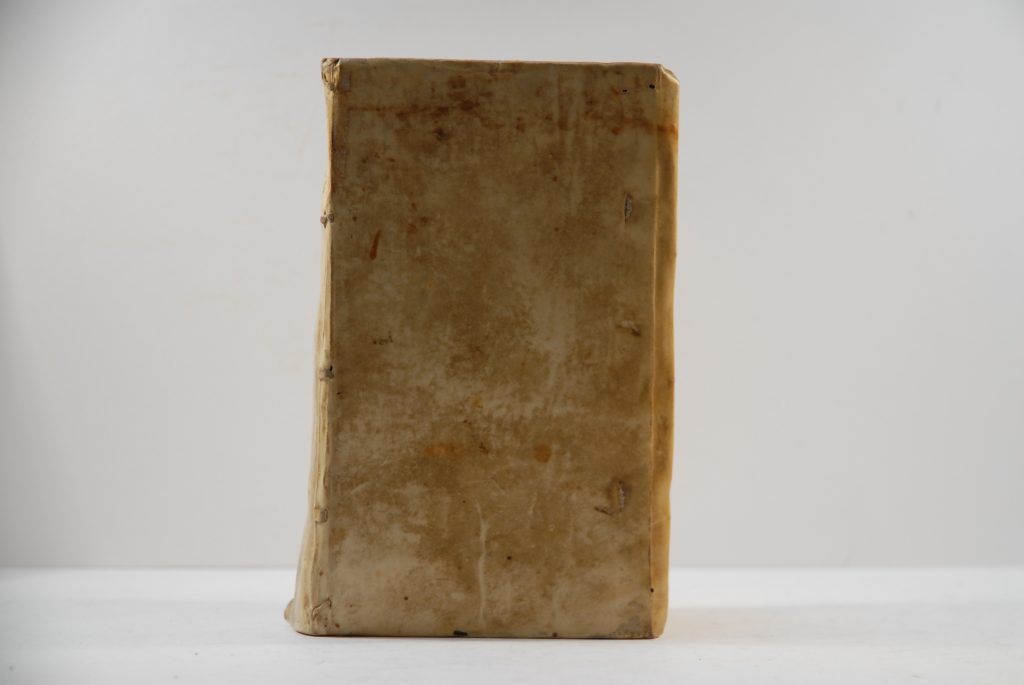LE NORMANT, Jean
Vera ac memorabilis historia de tribus energumenis in partibus Belgij, et de quibusdam aliis magiae complicibus … De vocatione magorum & magarum in genere, & in particulari, scilicet Magdalenae de Palud. Lodoici Gaufridy, Mariae de Sains, Simonae Dourlet .
Lutetiae Parisiorum : apud Oliuarum de Varennes, viâ Iacobaeâ, sub signo Victoriae, 1623£2,450.00
FIRST EDITION. 8vo. pp. [xx], 960 (iv) ; a¹ , A-3O , (-)2. [last blank].Roman letter, some Italic. Woodcut floriated initials, woodcut headpieces with double H’s, typographical ornaments. Light age yellowing, a little browning to a few quires, very pale waterstains in lower outer corner towards end. A very good copy in contemporary vellum over thin boards, remains of ties, lacks fly.
First edition, published simultaneously at Paris by Nicolas Buon, and a French translation in two volumes, entitled ‘Histoire Veritable et Memorable de ce qui c’est passé sous l’exorcisme de trois filles possedées es païs de Flandre’ also published by Olivier de Varennes. The latin edition is even rarer than the French, itself very rare. Extremely interesting accounts of the diabolic possession and exorcisms of the Nuns of the Monastery of St. Brigitte in Lille in 1613, conducted by the Dominican inquisitor Sebatien Michaëlis and recounted by his disciple Le Normant. Michaelis was vice-inquisitor in Avignon during the 1580s and was involved in a number of witch trials: a series of cases in 1581 and 1582 led to eighteen women being convicted and burnt. In 1587 he published a work on demons, the ‘Pneumalogie ou discours des esprits’. By 1610 he was prior of the Dominican community at Saint-Maxim near Aix-en-Provence where he was later involved in one of the most notorious witch trials, and cases of demonic possession, in the history of France, that of the priest Louis Gaufridi, who was convicted of sorcery, tortured and burnt, on the evidence of a nun ‘possessed by the devil.’ The present work is even more extravagant in the details it gives than Michaelis’ account of the Louis Gaufridi possessions of nuns in Aix. It bears extraordinary and most detailed witness to the immense pressure, both moral and physical, the nuns were subjected to when they were pressed to confess that they were in fact witches. Le Normant finds it ‘admirable’ when the nun , Marie de Sains, having been denounced by three other nuns possessed by demons, ends up confessing to being a magician and witch herself, after months of imprisonment and ‘mortifications’. Le Normant gives, naively, tremendous insight into the process involved in extracting these confessions, and in the ‘demonic’ possessions that occurred. The questioning by the inquisitors reveals extraordinary accounts of sexual transactions with the devil which are all carefully recorded and categorised. These orgiastic rituals or sabbaths, follow a strict timetable. Thus on Sundays the devil takes his traditional form, with serpent feet, red tails claws and horns. Marie de Sains states in her confession that “quelle prenoit plus de plaisir lors qu’elle avoit cohibitation avec le diable en forme de diable, que quand il abusoit d’elle en forme humaine, ou d’autre creature”. On Mondays and Tuesdays these sabbaths were ‘ordinary’, though the Thursday was consecrated to sodomy. “soit hommes, soit femmes commettent le péché de la chair, hors du vaisseau naturel: et que l’on se polluait pours lors en plusieurs sortes et manieres de tout estranges et abominables, la femme avec la femme, l’homme avec l’homme.” Saturdays were reserved for bestiality where the devils took the form of many animals. When the nun Didyme, who had confessed to extraordinary horrors, retracts her confession at the end of the second work she states “Et je m’esbahis ou j’ay peu prendre de telles inventions: ce qui me donne a croire que c’est le diable qui me les a soufflées en l’aureille.” One has to wonder if the devil she was referring to was not, explicitly, the inquisitors themselves. Cf. Marianne Closson ‘L’imaginaire démoniaque en France (1550-1650): genèse de la littérature .’
“When Le Normant came to defend his ‘Histoire Veritable’ against criticism from the academics of the Sorbonne, he too had to satisfy doubts about the propriety of listening to Demons. And, like Michaelis, he replied by stressing the overwhelming authority of properly conducted exorcisms and by examining what was revealed both for its intrinsic plausibility and for the way that might (in these two episodes at least) be externally corroborated by reference to the eschatological truths. Contemporaries did, therefore, express scepticism on this point (and increasingly came to do so) but these two Catholic authors cannot be said to have been unduly discomfited by there arguments” Stuart Clark. ‘Thinking with Demons: The Idea of Witchcraft in Early Modern Europe.’
Extremely rare.
BM STCFr. C17th. p309 L916. Guaita 487 “Ouvrage de démonologie des plus curieux et de la plus insigne rareté.” [French edn only]. Caillet, 6530. [French edn only]In stock








